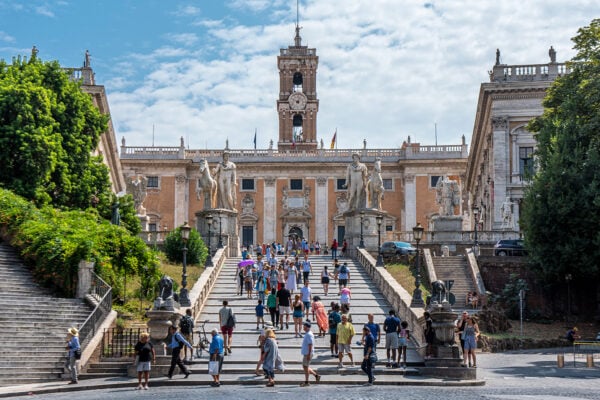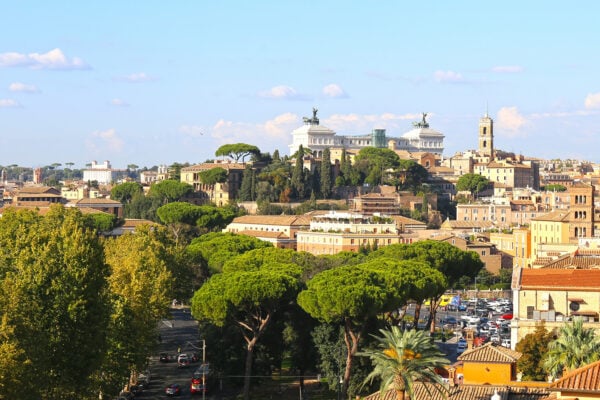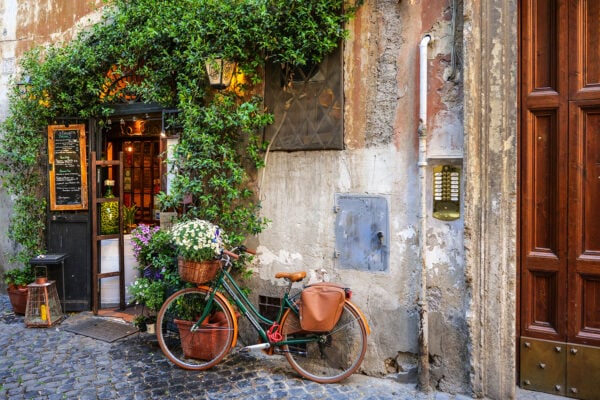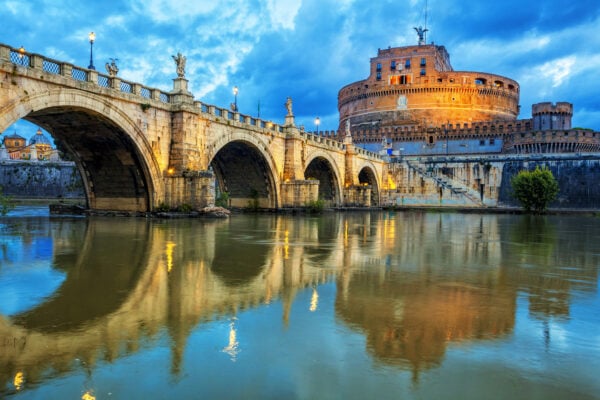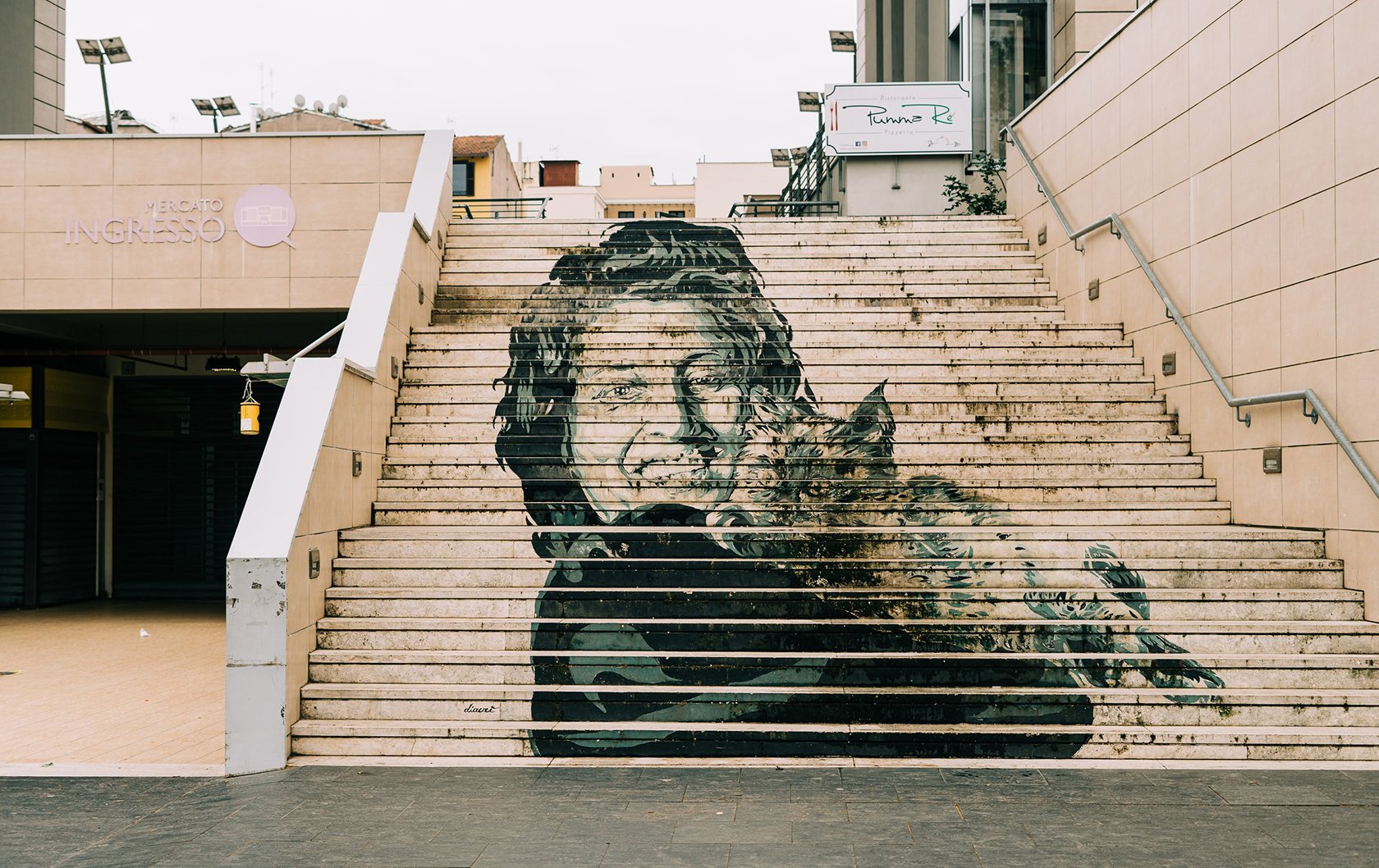
Street art in Rome depicting the iconic Italian actress Anna Magnani by David Diavù Vecchiato (credit)
Any trip to Rome will include hours spent walking through the city to admire the architecture and history that greets you at every turn. The capital, with its incredible wealth of museums and historical sites, never ceases to amaze those who visit it or even those who have lived a lifetime there. It’s no small wonder why it really is the Eternal City. True to its nickname, Rome has been the epicenter of cultural, historical and artistic moments from nearly the beginning of humanity to the present day.
While the Colosseum or the Trevi Fountain may be the first images that come into your mind when you think of a walk through Rome, it is the colorful bursts of street art that continue to infuse the city with creativity and spirit. While to some street art, or graffiti as it is also known, may seem like a sign of urban decay, the artists decorating Rome are dedicated to bringing beauty and social commentary to neighborhoods that may have once been neglected. While it may not be everyone’s idea of fine art, graffiti is undeniably a vital part of the history of Rome, and no visit is complete without taking it all in!
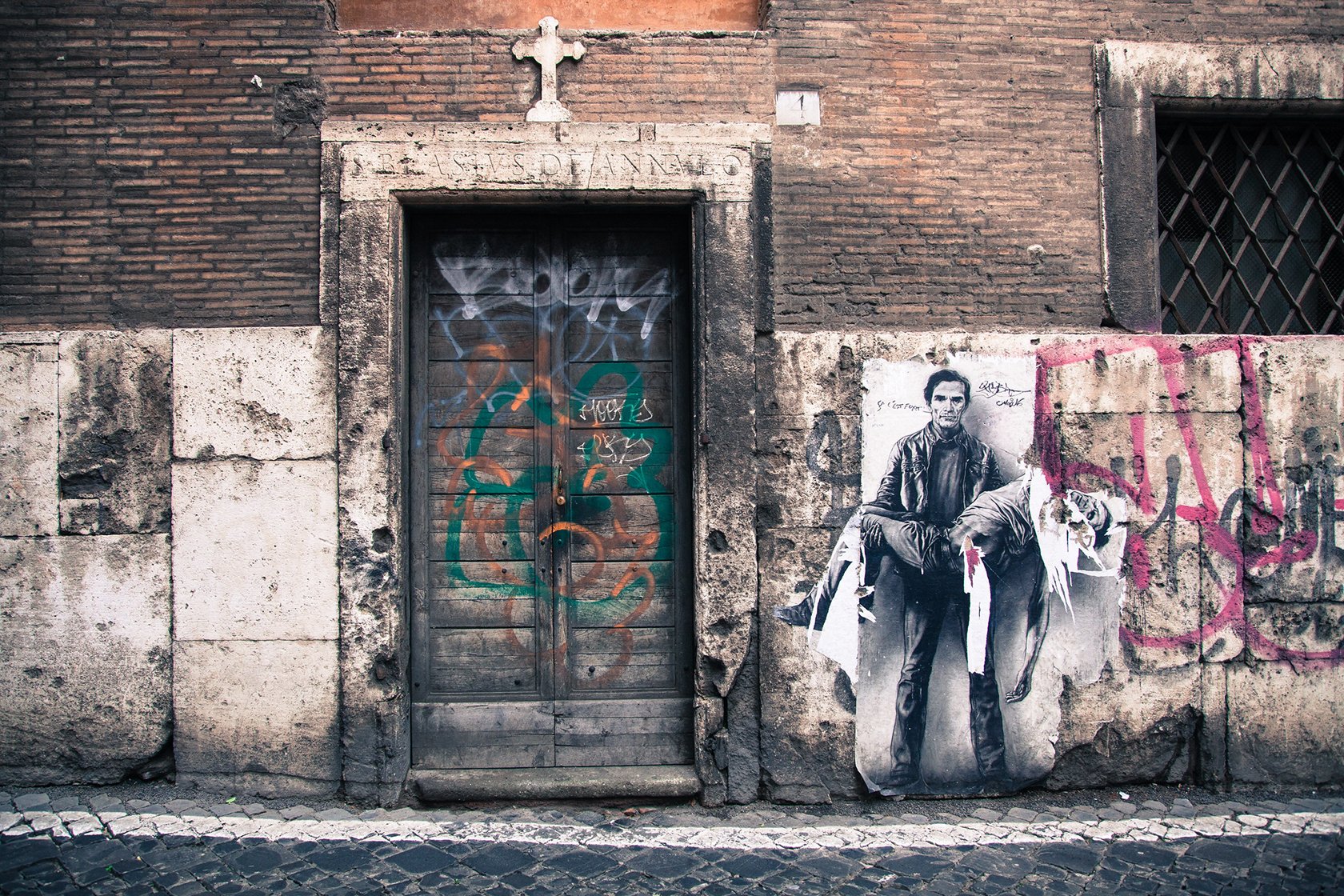
Street art in Rome (credit)
Roman Graffiti throughout History
Though it became popularly known in urban centers like New York and Detroit during the 1970s, graffiti has existed for thousands of years in some form. Indeed, even the word itself is from the Italian word “to scratch” (graffiare) and evidence of graffiti has been documented all over the Roman Empire. Most famously, of course, is in the ruins of Herculaneum and Pompeii, where The Ancient Graffiti Project has collected and meticulously catalogued etchings, poems and images that were recovered from towns that were tragically frozen in time.
However, the leap from ancient scrawling to modern day tagging didn’t occur until the late 1970s, when American hip hop artists like Fab Five Freddy traveled to Rome to showcase their work. This new and little understood medium of graffiti was displayed at the Galleria La Medusa on via del Babuino, one of the most prestigious addresses in the city. Nevertheless, and despite the fact that world renowned artists like Keith Haring used Rome as their canvas, modern graffiti was still an obscure and misunderstood art form.
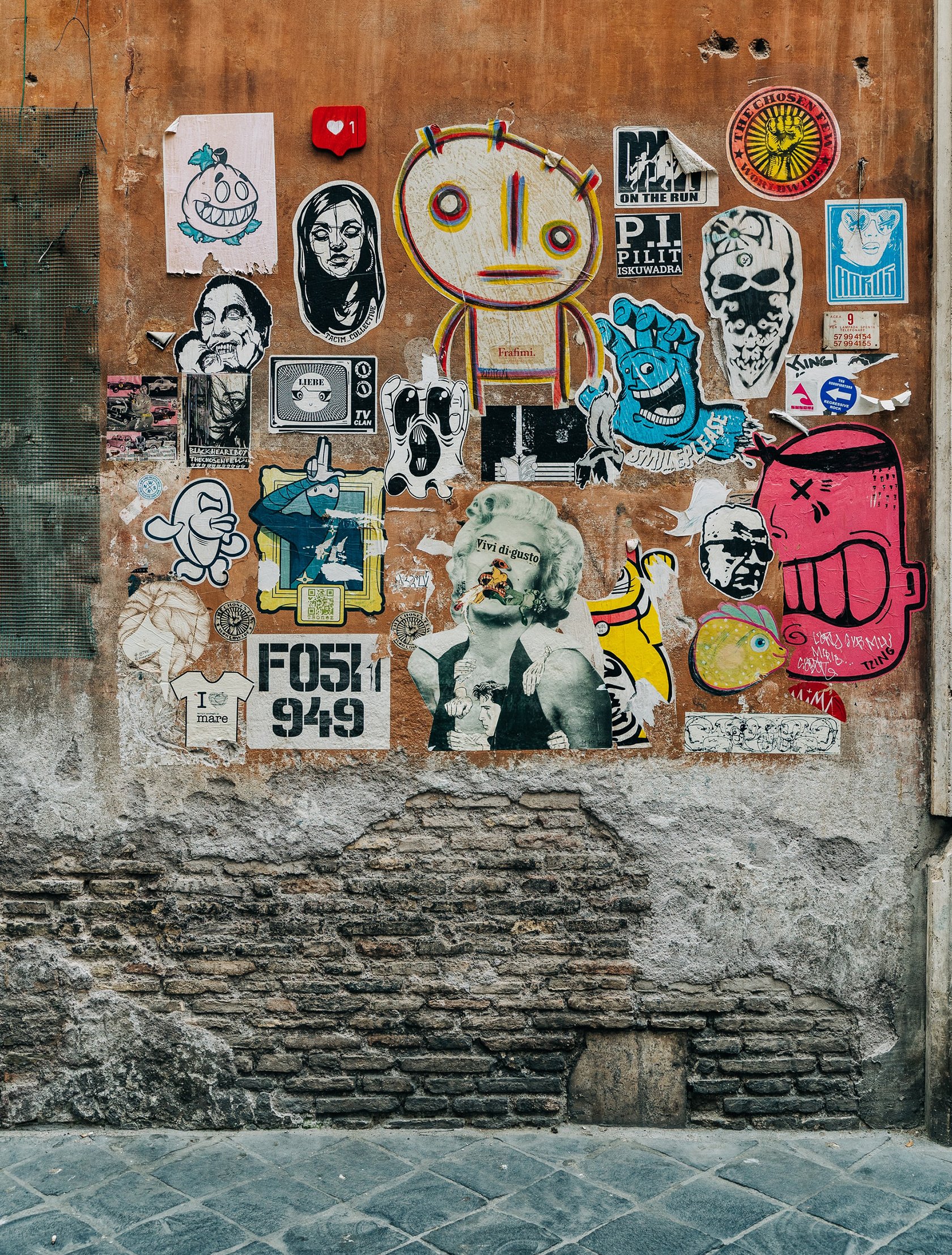
Ancient and modern textures in the historic center of Rome (credit)
By the mid 1990s, Rome had become something of a mecca for street artists from all over Europe, most leaving their tags on subway cars in the same way that they had done in New York throughout the 70s. However, the arrival of the Great Jubilee in Rome in 2000 meant that thousands of Catholic pilgrims would be streaming into the city, many of whom would do so on public transport. Just as the Pope promised to wash away the sins of the congregation, so to did the Italian government wash way the graffiti from its transport system.
However, graffiti did not disappear from the city, instead becoming a more deliberate movement and recognized form of artistic expression amongst a younger generation of Italians. It is still a contentious subject: most recently, anonymous street artist Geco drew the ire of the former Rome mayor Virginia Raggi for his outlandish, tongue in cheek designs (one of which, atop a massive building in the city, says “Geco gives you wings”). But street artists have also been instrumental in transforming some of the more neglected areas of the Italian capital, making it a dynamic place to live, work, and visit.
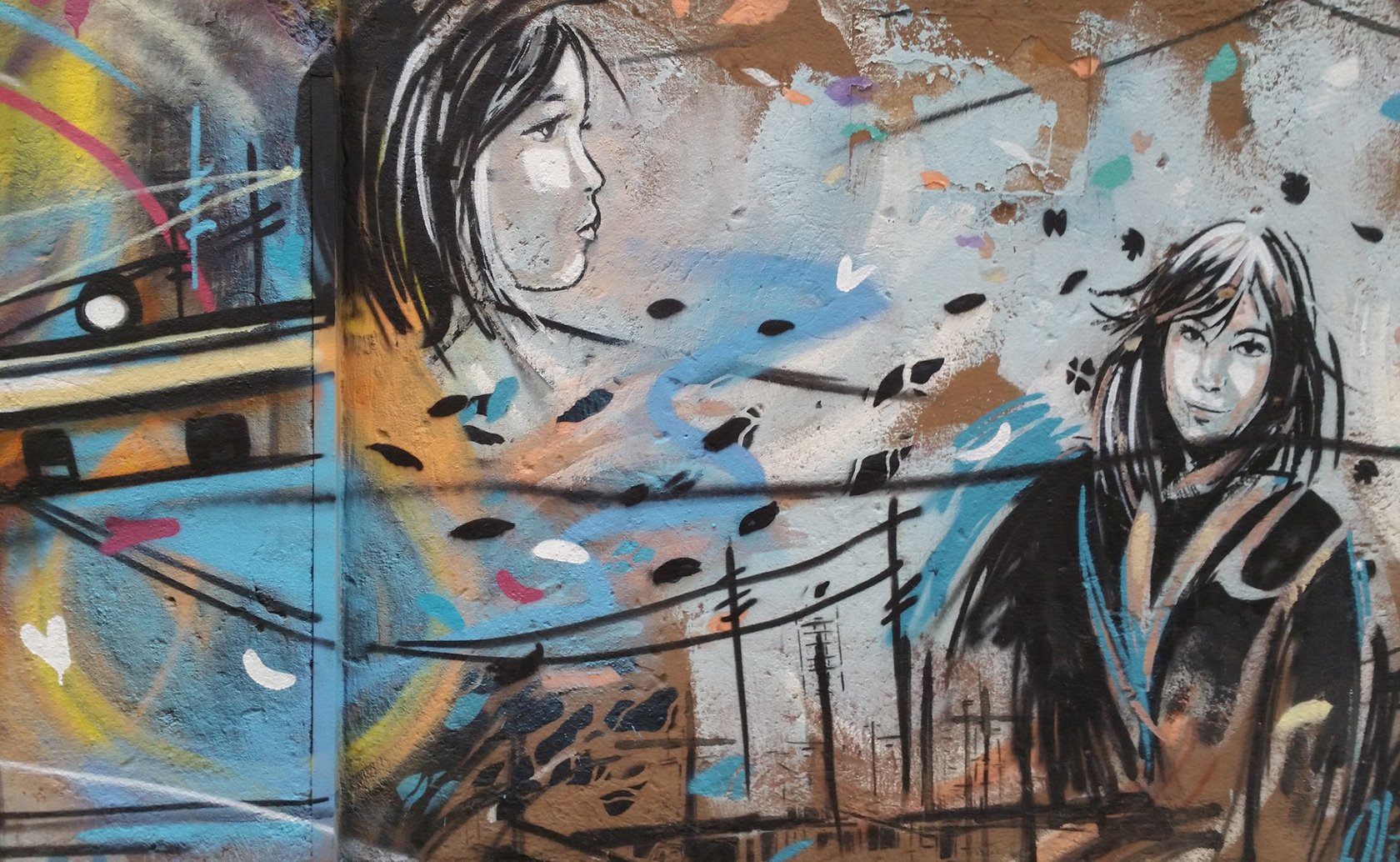
Roman street art
Where to find Roman street art (and who to look for!)
Despite (or maybe because of) the tension between the government and graffiti, street art in Rome has become more well respected both by the art world and the inhabitants of the city itself, making it incredibly interesting to seek out over the course of a visit. While it can seem a bit daunting to tackle an entire city, there are a few great resources that can help you navigate the many artists and their most famous work, some of which might be right under your nose.
If you’re looking for a crash course in contemporary Roman art, the best place to start is surely M.U.Ro, or the Museo Urbano di Roma, a non-profit project that offers street art tours in English of the Quardraro neighborhood. While it is a fair distance outside of the city center, it is worth the trip for those who want to go off the beaten path. They also have special tours for children and families that talk about how to bring out the creative genius in even the littlest spirits (without ruining your walls once you get home).
If you’re looking to go it alone and see what you can identify, dedicated graffiti enthusiasts have created this interactive map that shows every significant piece of street art in Rome’s up and coming San Lorenzo neighborhood, which is just next to Termini Station and the historic center. Besides being one of the city’s most artistic and creative areas, San Lorenzo is easily one of the most fascinating districts in Rome. If you long for the energy of Berlin, London’s Shoreditch, or New York in the 1990s, San Lorenzo delivers.
If you’d like to expand your search to the whole city, the Rome Tourism Board has compiled a fantastic street art map that will give you a sense of how much there is to see (and how important it is to the identity of the city itself). Even if you’re still not a fan of graffiti after a trip to Rome, you’ll undoubtedly be convinced that it is an important piece of what makes it such a special place.
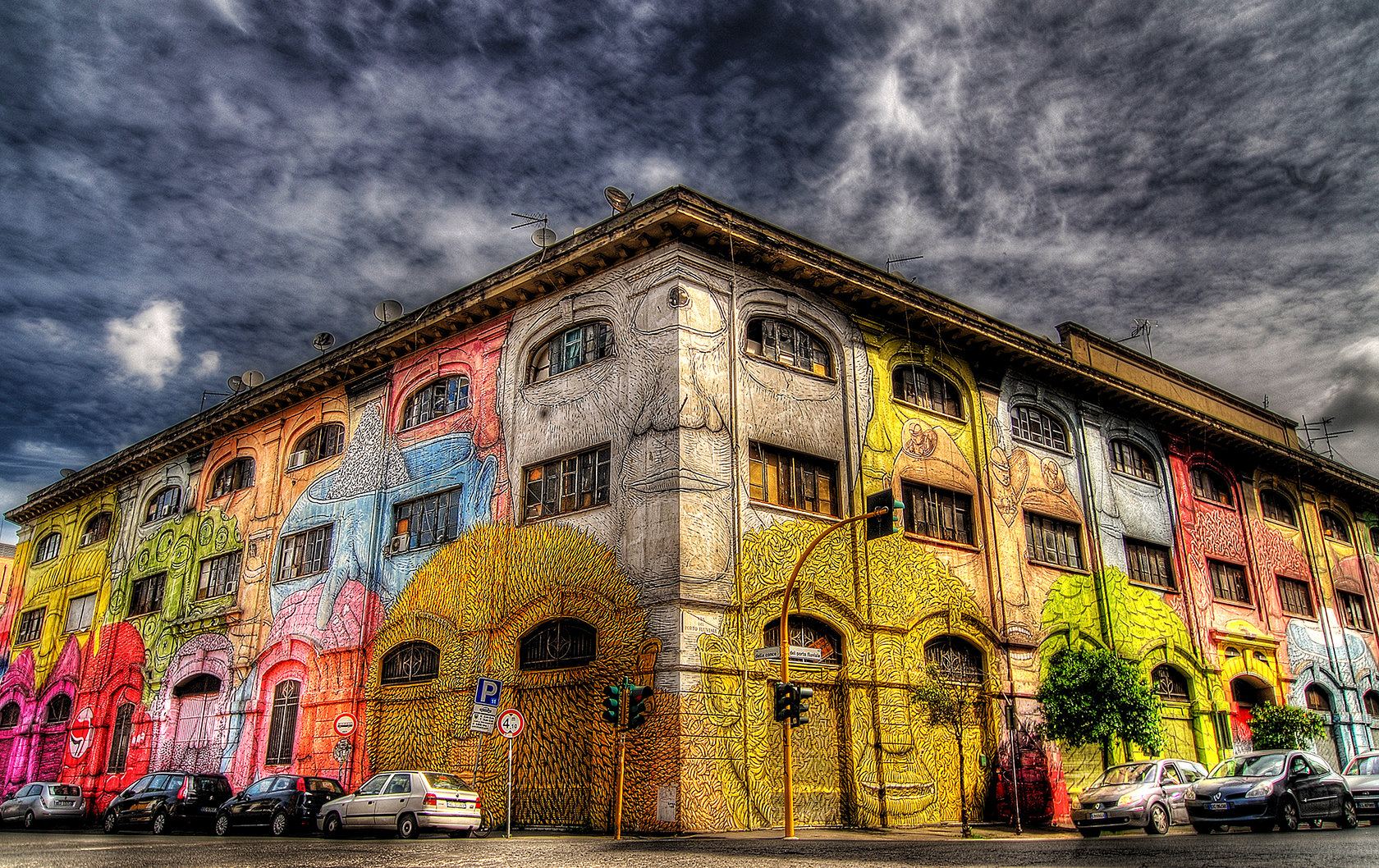
Colorful street art by Blu (credit)
Graffiti artists are sometimes as mysterious and intriguing as the art itself: after all, Banksy’s ability to remain anonymous after all these years is part of what has made him such a legend. Like Banksy and Geco, the Roman street artist Blu chooses to keep his identity a secret, but he is responsible for some of the most significant street art not only in Rome but around the world. Blu often uses his work to comment on political and social issues and his murals can be found in previously neglected (now up and coming) Ostiense and Pigneto. However, not all artists choose to remain a mystery.
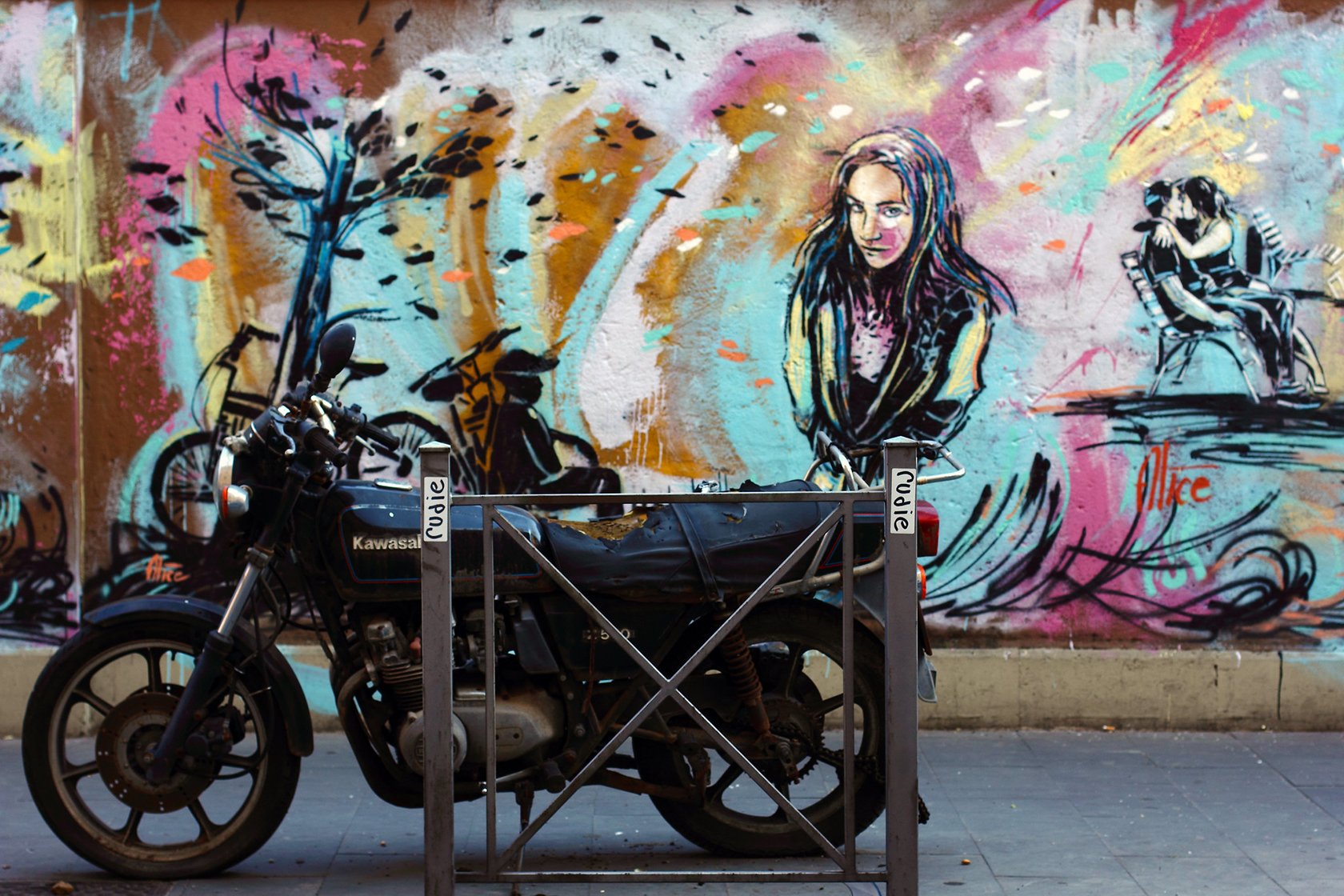
Alice Pasquini’s mural on via dei Sabelli in Rome (credit)
One of Rome’s most prolific and influential street artists is Alice Pasquini, a classically trained artist and painter who is behind some of the most incredible murals in the city. Her mural on via dei Sabelli in San Lorenzo runs the entire length of the street and depicts women throughout history and into the future. Pasquini also works on social and political themes such as gender equality, domestic violence and democracy, turning them all into beautiful pieces that speak to and reflect the lives of those who live among them. Artists like these are what make graffiti in Rome such a fascinating subject, and one which continues to symbolize the iconoclastic character of an ever-changing city.
